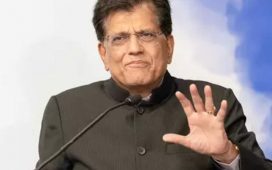According to the findings, ETFs have seen 48 consecutive months of global net inflows, gaining $75.1bn in May alone.
Gary Buxton, head of ETF EMEA at Invesco, said although it had taken over 20 years for ETFs to reach this level of popularity, their use by wealth managers, financial advisers and the younger generation of private investors had “really started to gain momentum in the past several years”.
International regulatory association finalises ETF best practice guidelines
“That being said, there is every indication that we are in the early stages of growth, with surveys highlighting a lack of understanding as the reason why many investors do not currently hold ETFs,” he added.
Buxton argued the lack of ETFs on platforms had been the “greatest impediment” to their uptake in the past, but this had now changed, as most platforms and trading apps have since added them to their offering.
He explained most investors had initially been drawn to ETFs due to their low cost and “highly dependable tracking of core benchmarks”, allowing them to be utilised when constructing a bespoke portfolio.
Aneeka Gupta, director of macroeconomic research at WisdomTree, was keen to stress that ETFs could fill various roles in a portfolio by allowing exposure to different market sectors, style characteristics, geographies, or specialised investments.
Sector composition
While ETFs have traditionally been used for broad exposure to wide pools of stocks, recent years have been characterised by the growth of new types of ETFs, including those targeting thematics, commodities and fixed income.
While beta exposures such as S&P 500 and MSCI World trackers still “dominate” the ETF landscape, according to Buxton, there has been increasing demand for ETFs in areas including fixed income, which now represents a quarter of ETF assets under management.
“Fixed income demand came from investors seeking additional yield when rates were zero, then adjusting duration and credit exposures during the tightening cycle,” he said.
More generally, Buxton said ESG had been the “most dominant theme” within ETFs, accounting for about 50% of net inflows in recent years.
WisdomTree’s Gupta argued due to the narrow exposures that ETFs can offer, and the wide range of sectors and asset classes they cover, it is essential to understand the effects different macroeconomic conditions can have on areas of investment.
Thematic
Lynn Hutchinson, head of ETF and index solutions at Charles Stanley, pointed to the L&G ROBO Global Robotics and Automation UCITS ETF as a prime example of the role a thematic ETF could fill for those wanting specificity in portfolio construction.
The ETF tracks the ROBO Global index, which Hutchinson said combined “fundamental research with insights from world-leading industry experts”.
Launched in 2013, the fund has returned 22% over the last year, 40% over three years and 51.8% over five years, according to data from FE fundinfo.
With around 80 equities in the ETF, the fund uses an equal weighting system modified based on revenue purity and market/technology leadership, with approximately 73% purity to the robotics and automation theme.
Hutchinson also noted the ETF’s low overlap with major indices, only covering 3% of the S&P 500, 3% of MSCI World and 3% of MSCI ACWI.
The ETF’s geographic company revenue exposure is also diversified, she said, at approximately 38% in the US, 37% in Asia/Pacific and 22% in Europe.
Deep Dive: Fixed income offers ‘number of opportunities’ in period of high volatility
“Market drivers of performance for the holdings in this ETF are a shrinking global workforce due to ageing population, rising labour costs, declining production costs for robots and consumer demand for customised goods at mass produced prices,” concluded Hutchinson.
Looking ahead
Buxton argued ETFs will play “an increasingly important role in investor portfolios, whatever the market environment” and noted there has been an increased demand for Nasdaq exposure as an alternative to the S&P 500, along with greater interest in emerging markets.
“Many investors will also use sector ETFs to make tactical adjustments to portfolios as a way of expressing a view on the market,” he added, with gold ETFs one example of this, as they grew in popularity during the recent period of high volatility and geopolitical risks.
“In fixed income, we think investors should continue using ETFs for low-cost, liquid access to their choice of government bonds, investment grade credit or high yield markets, depending on how the rate outlook and yield curves develop in the coming months,” Buxton said.






